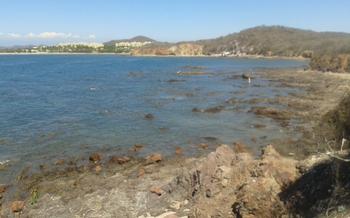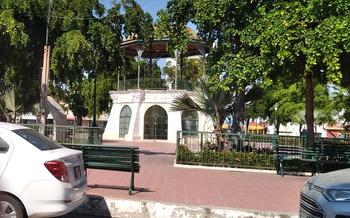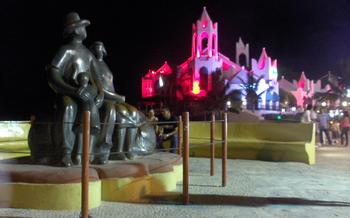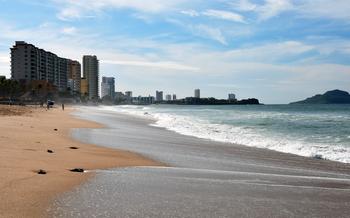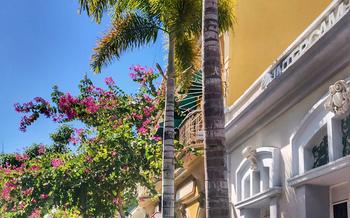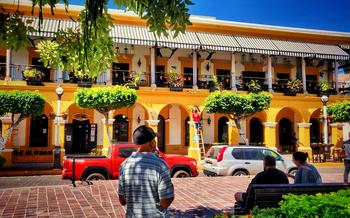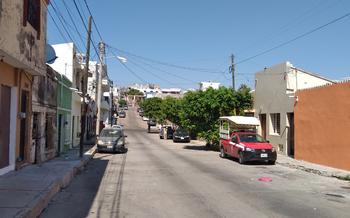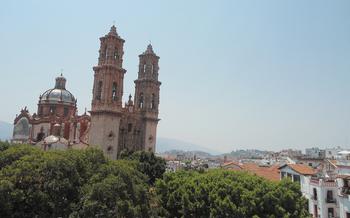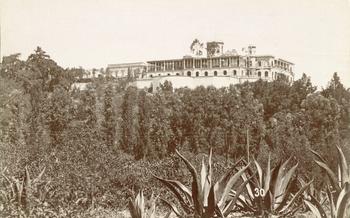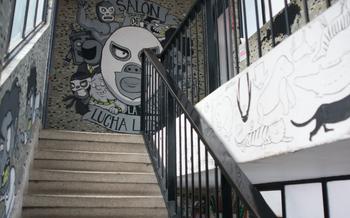
Museo de Conchas y Caracoles Marinos
- Exploring the Museum's Exhibits
- Unveiling the Wonders of Marine Snails
- Interactive Learning Experiences
- Conservation Efforts at the Museum
- Seashell Art and Crafts
- Local Artisans and Vendors
- Museum Gift Shop and Souvenirs
- Planning Your Visit
- Historical Significance of Seashells
- Educational Programs for Children
- Marine Biodiversity in Mazatlan
- Future Plans and Expansion
- Insider Tip: Hidden Gems
Exploring the Museum's Exhibits
The Museo de Conchas y Caracoles Marinos houses a diverse collection of exhibits showcasing various species of seashells. Visitors can marvel at the intricate patterns, vibrant colors, and unique shapes of these marine treasures. The museum's exhibits are carefully organized, providing information on the scientific classification and significance of each specimen. Interactive displays and multimedia presentations further enhance the learning experience, allowing visitors to delve deeper into the world of seashells.
One of the highlights of the museum is the exhibit on marine snails, which showcases the incredible diversity and ecological importance of these fascinating creatures. Visitors can learn about the unique adaptations of marine snails, such as their specialized feeding mechanisms and protective shells. The exhibit also highlights the role of marine snails in maintaining the health and balance of marine ecosystems.
Unveiling the Wonders of Marine Snails
The Museo de Conchas y Caracoles Marinos boasts a captivating collection of marine snails, showcasing the incredible diversity and adaptations of these fascinating creatures. From the tiny and intricate to the large and flamboyant, each snail holds a story of its own.
Marine snails, also known as sea snails or gastropods, are a diverse group of mollusks that inhabit a wide range of marine environments. They come in various shapes, sizes, and colors, reflecting their unique adaptations to their specific habitats.
The museum's collection includes a variety of marine snails, from the common periwinkle to the more exotic cone snails. Visitors can learn about the different types of shells, their scientific classification, and their ecological significance.
One of the highlights of the collection is the giant sea snail, which can grow up to a foot in length. These massive snails are found in tropical and subtropical waters and feed on a variety of marine organisms.
Another fascinating species is the cone snail, known for its venomous sting. Cone snails use their venom to paralyze their prey, which consists of small fish and worms. Their venom is also being studied for its potential medicinal applications.
Through interactive displays and educational panels, the museum provides visitors with insights into the unique adaptations of marine snails and their crucial role in marine ecosystems. These creatures play a vital role in maintaining the health and balance of our oceans.
One of the most interesting exhibits is a live snail tank, where visitors can observe marine snails in their natural habitat. This exhibit provides a glimpse into the fascinating world of these often-overlooked creatures.
Interactive Learning Experiences
The Museo de Conchas y Caracoles Marinos offers a variety of educational programs and interactive exhibits designed to engage visitors of all ages. Through hands-on activities, workshops, and guided tours, the museum provides a deeper understanding of marine life and the importance of ocean conservation.
During my visit, I had the opportunity to participate in a guided tour led by a knowledgeable marine biologist. The tour highlighted the unique characteristics of various seashells and marine snails, their ecological roles, and the threats they face due to human activities. The guide's passion and expertise made the tour both informative and engaging.
In addition to guided tours, the museum also offers interactive displays that encourage visitors to learn through play. Touch tanks allow visitors to handle live marine specimens, while multimedia presentations provide immersive experiences of the underwater world. These interactive elements make the museum a great destination for families with children, as they transform learning into a fun and memorable experience.
The museum's educational programs extend beyond its walls, reaching schools and communities throughout the region. Through outreach programs and workshops, the museum's team educates students and local residents about the importance of marine conservation and sustainable practices. By fostering a sense of stewardship, the museum plays a vital role in protecting the marine environment and inspiring future generations of ocean advocates.
Conservation Efforts at the Museum
The Museo de Conchas y Caracoles Marinos is not just a showcase of marine wonders; it also plays a crucial role in marine conservation and research. The museum actively promotes sustainable practices and raises awareness about the importance of protecting our oceans. Through its educational programs and exhibits, the museum inspires visitors to become stewards of the environment.
One of the museum's key conservation initiatives is its collaboration with local fishermen and marine biologists to study and protect endangered marine species. The museum's research team conducts regular surveys and monitoring programs to assess the health of the local marine ecosystem. They work closely with local communities to promote sustainable fishing practices and reduce the impact of human activities on marine life.
The museum also collaborates with other organizations and institutions to support marine conservation efforts on a broader scale. They participate in beach cleanups, coral reef restoration projects, and educational campaigns to raise awareness about marine pollution and climate change.
Through these initiatives, the Museo de Conchas y Caracoles Marinos goes beyond showcasing marine beauty; it actively works to protect and preserve the wonders of the sea for future generations.
Seashell Art and Crafts
The Museo de Conchas y Caracoles Marinos showcases the exquisite artistry of local artisans who transform ordinary seashells into breathtaking works of art. Visitors can marvel at intricate jewelry, home décor, and souvenirs adorned with vibrant seashells, each piece a testament to the creativity and skill of these talented craftsmen. The museum celebrates the cultural significance of seashell art in Mazatlan, where seashells have been used for centuries to create beautiful and meaningful objects. Whether it's a delicate necklace, a colorful wind chime, or a unique piece of home décor, these seashell creations are a true reflection of the region's rich artistic heritage.
Local Artisans and Vendors
As you step out of the Museo de Conchas y Caracoles Marinos, you'll be greeted by a vibrant array of local artisans and vendors showcasing their seashell creations. From intricate jewelry and home décor to unique souvenirs, there's something for everyone.
The artisans here are masters of their craft, transforming ordinary seashells into exquisite pieces of art. Their techniques are passed down through generations, ensuring the preservation of traditional craftsmanship.
Supporting these local businesses is not just about acquiring beautiful souvenirs; it's about contributing to the livelihood of skilled artisans and preserving their cultural heritage.
As you browse through their offerings, don't be afraid to engage with the vendors. They're friendly and eager to share stories behind their creations. You might even get a glimpse into their lives and the rich culture of Mazatlan.
Remember, bargaining is a common practice here, so don't be shy to negotiate a fair price. It's a fun and interactive way to connect with the locals and take home a unique piece of Mazatlan's seashell treasures.
Museum Gift Shop and Souvenirs
The Museo de Conchas y Caracoles Marinos houses a charming gift shop that offers a treasure trove of souvenirs and mementos for visitors to cherish. From delicate seashell jewelry and intricate home décor to colorful souvenirs, there's something for everyone.
One of the unique items available at the gift shop is the "Concha Nacar", a beautiful piece of jewelry made from the iridescent shell of the abalone. This stunning pendant is a symbol of good luck and protection and makes for a meaningful gift.
Another popular item is the "Caracol Marino", a decorative conch shell adorned with intricate carvings. These shells are often used as decorative pieces or as a unique way to store small items.
The gift shop also offers a variety of educational books and guides on seashells and marine life. These books are perfect for visitors who want to learn more about the fascinating world of marine creatures.
Proceeds from the sale of souvenirs at the museum's gift shop directly support the museum's conservation efforts and educational programs. By purchasing a souvenir, visitors not only take home a piece of the museum's collection but also contribute to its ongoing mission of protecting and preserving marine life.
I highly recommend visiting the gift shop and browsing the unique collection of souvenirs. You're sure to find something special to remind you of your visit to the Museo de Conchas y Caracoles Marinos.
Planning Your Visit
Visiting the Museo de Conchas y Caracoles Marinos is a delightful experience for visitors of all ages. To make the most of your visit, here are a few practical tips:
-
Location and Accessibility: The museum is located on Avenida del Mar in the heart of Mazatlan's historic center. It is easily accessible by foot, public transportation, or taxi.
-
Opening Hours: The museum is open from Tuesday to Sunday, from 10 am to 5 pm. Plan your visit accordingly to avoid disappointment.
-
Admission Fees: Admission fees are minimal and reasonable, making it an affordable attraction for budget-minded travelers.
-
Combining Attractions: Consider combining your visit to the museum with other nearby attractions, such as the Mazatlan Aquarium, the Old Mazatlan Cathedral, or the Plazuela Machado. This will allow you to experience the city's rich cultural and historical heritage in one go.
-
Guided Tours: While guided tours are not mandatory, they can enhance your experience by providing insightful commentary and information about the exhibits. Inquire at the museum's front desk for tour availability and schedules.
-
Photography: Photography is permitted inside the museum, but using flash photography is discouraged to prevent damage to the delicate exhibits.
-
Souvenirs: Don't forget to visit the museum's gift shop to purchase unique souvenirs, such as seashell jewelry, home décor, and other locally made handicrafts.
Historical Significance of Seashells
Throughout history, seashells have held profound cultural and symbolic significance in various societies worldwide. In ancient times, they were prized for their beauty and rarity, often used as decorative elements in jewelry, art, and religious rituals. Seashells were also believed to possess magical properties and were used as talismans or amulets for protection and good luck. In many cultures, they were associated with fertility, wealth, and abundance, and were often incorporated into traditional ceremonies and rituals.
In some societies, seashells were used as a form of currency, with their value determined by their size, shape, and rarity. In ancient China, for instance, cowrie shells were used as money, and in certain parts of Africa, seashells were used as a form of barter for goods and services.
Seashells have also played a significant role in religious and spiritual practices. In Hinduism, for example, the conch shell is considered sacred and is used in religious ceremonies and rituals. In some Native American cultures, seashells were believed to be the homes of spirits and were used in rituals to communicate with the spirit world.
The historical significance of seashells extends beyond their practical and decorative uses. They have also been a source of inspiration for artists, writers, and musicians throughout the ages. From the intricate seashell designs found in ancient Greek and Roman art to the seashell motifs in Renaissance paintings, seashells have captured the imagination of creative minds for centuries.
Educational Programs for Children
The Museo de Conchas y Caracoles Marinos recognizes the importance of marine education for the younger generation. To this end, it offers a variety of educational programs and workshops tailored specifically for children. These programs aim to instill a love for the ocean and its inhabitants, while teaching children about the significance of marine conservation.
Interactive activities and games form a crucial part of these educational programs. Children can engage in hands-on experiences such as creating their seashell art, examining marine specimens under microscopes, and playing interactive games that teach them about the different species of seashells and marine snails.
Visiting the museum with children is a wonderful opportunity for families to bond and learn together. The museum's engaging and interactive exhibits provide a fun and educational environment for children of all ages, fostering their curiosity and appreciation for the wonders of the marine world.
Marine Biodiversity in Mazatlan
Mazatlan boasts a remarkable marine biodiversity, with its waters teeming with a diverse array of marine life. From the vibrant coral reefs to the playful dolphins, visitors to Mazatlan can immerse themselves in the wonders of the underwater world. The Museo de Conchas y Caracoles Marinos provides a glimpse into this rich marine biodiversity, showcasing the variety of seashells and marine snails found in the region.
During your visit, keep an eye out for the colorful parrotfish, which graze on the coral reefs, creating a vibrant kaleidoscope of colors. The graceful manta rays glide effortlessly through the water, their massive wings flapping gently. If you're lucky, you might even spot a pod of playful dolphins, leaping and spinning in the waves.
Protecting and preserving the delicate marine ecosystem of Mazatlan is crucial for the survival of these incredible creatures. By supporting local conservation efforts and practicing responsible tourism, visitors can contribute to the long-term health and sustainability of this unique marine environment.
Future Plans and Expansion
The Museo de Conchas y Caracoles Marinos is not resting on its laurels. The museum has ambitious plans for the future, including expanding its exhibits and educational programs. One exciting project in the works is the creation of a new interactive exhibit that will allow visitors to learn about the importance of marine conservation and the threats facing our oceans. The museum is also planning to expand its educational offerings with new workshops, guided tours, and programs for children. These initiatives will further enhance the museum's mission to promote marine conservation and educate visitors about the wonders of the sea. Keep an eye out for these exciting developments, as the Museo de Conchas y Caracoles Marinos continues to grow and evolve.
Insider Tip: Hidden Gems
As you wander through the museum, keep an eye out for a hidden gem tucked away in a corner – a stunning display of iridescent abalone shells. These mesmerizing shells, with their rainbow-like colors, are a true sight to behold. Take a moment to admire their intricate patterns and the way they shimmer and change color as the light hits them. For a unique photo opportunity, position yourself so that the abalone shells are backlit by a window, creating a beautiful silhouette against the light. After your visit to the museum, head to the nearby Mercado Municipal, a bustling market where you can savor delicious fresh seafood and soak up the local atmosphere.
